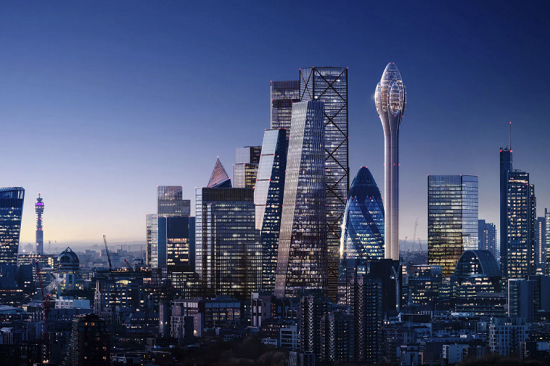 Friday, October 4, 2024
Friday, October 4, 2024  Friday, October 4, 2024
Friday, October 4, 2024 
Even by the standards of London’s glassy skyscraper district, which includes buildings nicknamed for a walkie-talkie and a cornichon, the Tulip would have been a weird one. The design, by the British architect Norman Foster, featured a 50-foot-wide concrete shaft supporting a multilevel observation deck a thousand feet over London Bridge. There was no office space. No housing. Just a big pole with a view, which, in these times, looked less like a flower than a swab testing the London sky for COVID-19.
Last month, the U.K. government rejected the design. Among the reasons were many shortcomings that will sound familiar to American readers: loss of open space, harm to historic structures, limited community benefits. And one that might sound new: “very high embodied energy.”
Never mind that Lord Foster, as the 86-year-old architect of Apple’s ring-shaped headquarters is known over there, was pursuing the highest U.K sustainability rating. When planning inspector David Nicholson referred to the Tulip’s “unsustainable whole life-cycle,” he was making a broader assessment of the project’s environmental costs, from the demolition of the site’s existing structures to the concrete in the tower core.
For decades, sustainability in architecture, engineering, and construction has been evaluated based on a building’s energy bill. Assessing “embodied” energy or carbon instead is a new approach that requires counting the emissions that go into every part of the structure, from the gas-powered chainsaws in the forest to the assembly line in the lumber mill to the flatbed trucks that bring materials to the building site. This calculation might include future building materials, from replacement pipes to office supplies, and even the eventual carbon cost of demolition. The carbon footprint of a new building soars, for example, when you begin to incorporate the environmental cost of cement manufacturing, which accounts for 4 percent of global emissions.